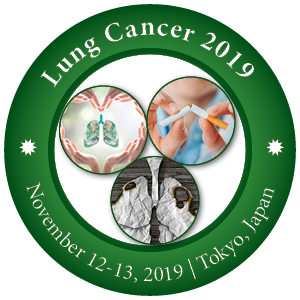Abdulrahman Hakami
Jazan university, Jazan City, Saudi Arabia
Title: Trousseau’s Syndrome in association with Lung Adenocarcinoma
Biography
Biography: Abdulrahman Hakami
Abstract
Trousseau’s syndrome (TS) is a hypercoagulability manifestation of the paraneoplastic syndrome (PNS), known as a variant of cancer-associated thrombosis and defined as a migratory thrombophlebitis found typically in patients with an underlying malignancy. TS commonly occurs in pancreatic cancer (24%), lung cancer (20%), prostate cancer (13%), stomach cancer (12%) then breast and colon cancer.
Case presentation:
Here, we describe the case of 50 years old male patient, nonsmoker, he was doing checkup for his job, found to have mantoux test (TBT) highly positive so ordered for him chest x-ray. He has a previous chronic history of burning sensation of both feet, respond to analgesic drugs. No history of shortness of breath or cough. No history of fever, night sweating, weight loss, loss of appetite and fatigue. Auscultation of Chest x-ray revealed a mass in left upper lobe of lung. Computed Tomography chest showed left lingual superior segment lobulated mass 5.5 x 4.3 cm with left hilar and mediastinal lymph node enlargement. Also in the CT reported bone metastasis in vertebra that confirmed with bone sacn. Tumor markers were negative. CT guided biopsy for this lesion in the left upper chest done and the histopathology result showed poorly differentiated adenocarcinoma, molecular studies: EGFR, ALK, ROS, PD-1 were negative. Patient referred to the oncology center as case of lung adenocarcinoma with distant metastasis, stage T4bN2bM1 and started in chemotherapy Cisaplatin and Alimta. Spirat CT revealed incidental finding of multiple filling defect indicate segmental pulmonary embolism, because of legs pain done also Doppler of lower limb and showed deep venous thrombosis in the left limb. Started with Enoxaparin full dose. This case report indicate a Trousseau’s syndrome (TS) Cancer- associated thrombosis.
The patient after receiving first cycle chemotherapy, was discharged on Enoxaparin and was stable and return to his job.
Conclusions:
TS is a paraneoplastic manifestation must consider in patients with advanced stages of cancer regardless of the primary site of the cancer. In lung cancer, the paraneoplastic syndrome presented more frequently with small cell carcinoma in 10% but regarding TS in the literature, previous cases reported adenocarcinoma was the most prevalent histology associated thrombosis. Keywords: Trousseau syndrome, adenocarcinoma, Cancer-associated thrombosis

